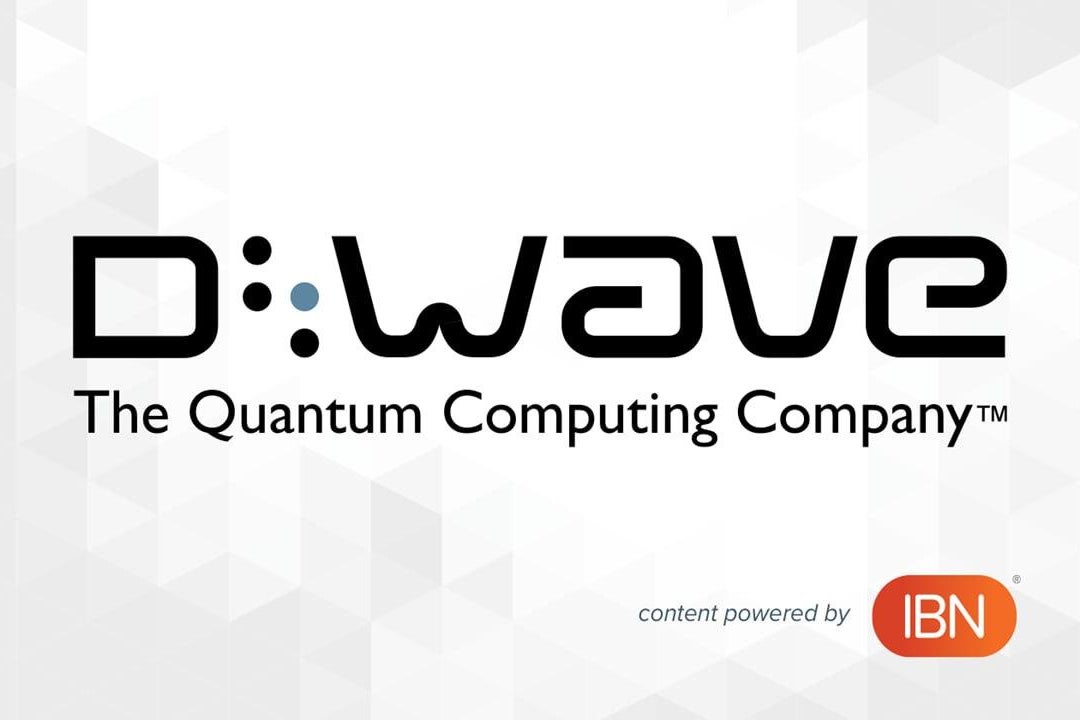D-Wave Quantum (QBTS): A Quantum Computing Stock Investment Analysis

D-Wave Quantum's Technology and Market Position
D-Wave Quantum's unique approach to quantum computing centers around quantum annealing. Unlike gate-based quantum computers that use qubits to perform computations sequentially, D-Wave's systems leverage quantum annealing to find the lowest energy state of a problem, effectively solving optimization problems. This technology presents both advantages and disadvantages compared to other approaches.
-
Explanation of quantum annealing and its applications: Quantum annealing excels in tackling optimization problems found in various fields, such as logistics, financial modeling, and materials science. It's particularly well-suited for tasks requiring finding the best solution among many possibilities.
-
Comparison table of D-Wave's technology versus competitors:
| Feature | D-Wave (Quantum Annealing) | IBM, Google (Gate-based) | IonQ (Trapped Ions) |
|---|---|---|---|
| Approach | Quantum Annealing | Gate-based Quantum Computing | Trapped Ion Quantum Computing |
| Strengths | Optimization problem solving | Versatility, potential for broader applications | High qubit coherence |
| Weaknesses | Limited to optimization problems | High error rates, scalability challenges | Scalability challenges, cost |
| Current Status | Commercially available systems | Developing advanced prototypes | Developing advanced prototypes |
-
Discussion of D-Wave's market share and growth potential: While D-Wave holds a significant early-mover advantage in the commercial quantum annealing market, its market share is difficult to precisely quantify due to the nascent nature of the quantum computing industry. Future growth hinges on expanding applications and improving the technology's performance and scalability.
-
Analysis of D-Wave's patents and intellectual property: D-Wave possesses a substantial portfolio of patents related to quantum annealing technology, providing a competitive edge and protecting its innovations. This IP portfolio is a significant asset for the company.
Financial Performance and Valuation of QBTS
Analyzing QBTS stock requires a careful examination of D-Wave's financial performance. As a relatively young company in a rapidly developing sector, profitability is not yet a primary focus. Key metrics to consider include revenue growth, research and development spending, and cash burn rate.
-
Review of D-Wave's recent financial reports (income statement, balance sheet, cash flow statement): Investors should meticulously review D-Wave's publicly available financial statements to understand its revenue streams, expenses, and overall financial health.
-
Calculation and interpretation of key financial ratios: Relevant ratios, such as the operating cash flow to revenue ratio, will provide insights into D-Wave's operational efficiency and its ability to generate cash from operations.
-
Analysis of the company's valuation compared to peers: Because direct peers are scarce in this nascent industry, valuation comparisons require a careful consideration of the future potential of the quantum computing market.
-
Identification of potential financial risks and opportunities: Significant risks include the high capital expenditures required for research and development, the potential for technological disruption, and competition from other quantum computing companies.
Future Growth Potential and Investment Risks of D-Wave Quantum
The quantum computing market is projected to experience substantial growth in the coming years. Various industries stand to benefit from D-Wave's technology, but realizing this potential presents inherent risks.
-
Analysis of market projections for the quantum computing industry: Market research firms predict substantial growth in the overall quantum computing market, creating a favorable environment for D-Wave's growth. However, the timing and extent of this growth remain uncertain.
-
Discussion of potential applications of D-Wave's technology in different sectors: Potential applications span diverse sectors including logistics optimization, drug discovery, financial modeling, and materials science, offering significant growth opportunities.
-
Identification of key risks, such as technological hurdles, competition, and regulatory changes: Technological risks include challenges in scaling the technology and improving qubit coherence. Competition from established tech giants and emerging startups poses a significant threat. Regulatory changes and government policies can also impact the industry's growth trajectory.
-
Assessment of the overall investment risk profile of QBTS: Investing in QBTS carries considerable risk due to the early-stage nature of the quantum computing industry and the company's current financial position.
How to Invest in D-Wave Quantum (QBTS)
Investing in QBTS stock involves understanding the process and associated risks. Consider these factors before making investment decisions.
-
Steps to purchase QBTS stock: Investors can typically purchase QBTS stock through reputable online brokerage accounts that offer access to the Nasdaq stock exchange.
-
Discussion of different investment time horizons: Given the long-term potential of quantum computing, a long-term investment strategy is often recommended.
-
Advice on risk management and diversification: It's crucial to diversify your investment portfolio to mitigate risks and not allocate a significant portion of your investment capital to a single, high-risk stock.
-
Listing of suitable brokerage accounts: Many online brokerage firms offer access to QBTS stock. It's important to choose a brokerage with a strong reputation and competitive fees.
Conclusion
This analysis provides a comprehensive overview of D-Wave Quantum (QBTS) as a quantum computing stock investment. We’ve examined its technology, financial performance, future growth prospects, and associated risks. The quantum computing market holds significant long-term potential, but investing in QBTS involves considerable risk.
Call to Action: Thorough due diligence is crucial before investing in any stock, particularly in a rapidly evolving field like quantum computing. Further research into D-Wave Quantum (QBTS) and the broader quantum computing market is essential to making an informed decision about whether this quantum computing stock aligns with your investment goals and risk tolerance. Remember to consult with a financial advisor before making any investment decisions. Consider the potential of QBTS and other quantum computing stocks carefully before making any investment in this exciting but risky sector.

 The Goldbergs Characters Humor And Cultural Impact
The Goldbergs Characters Humor And Cultural Impact
 Gbr Top Stories Grocery Deals 2 K Quarter And Doge Poll Results
Gbr Top Stories Grocery Deals 2 K Quarter And Doge Poll Results
 Hellfest A Mulhouse Concert Au Noumatrouff
Hellfest A Mulhouse Concert Au Noumatrouff
 Sound Perimeter And Shared Experience The Power Of Music
Sound Perimeter And Shared Experience The Power Of Music
 Dimotiko Odeio Rodoy Synaylia Ton Kathigiton
Dimotiko Odeio Rodoy Synaylia Ton Kathigiton
